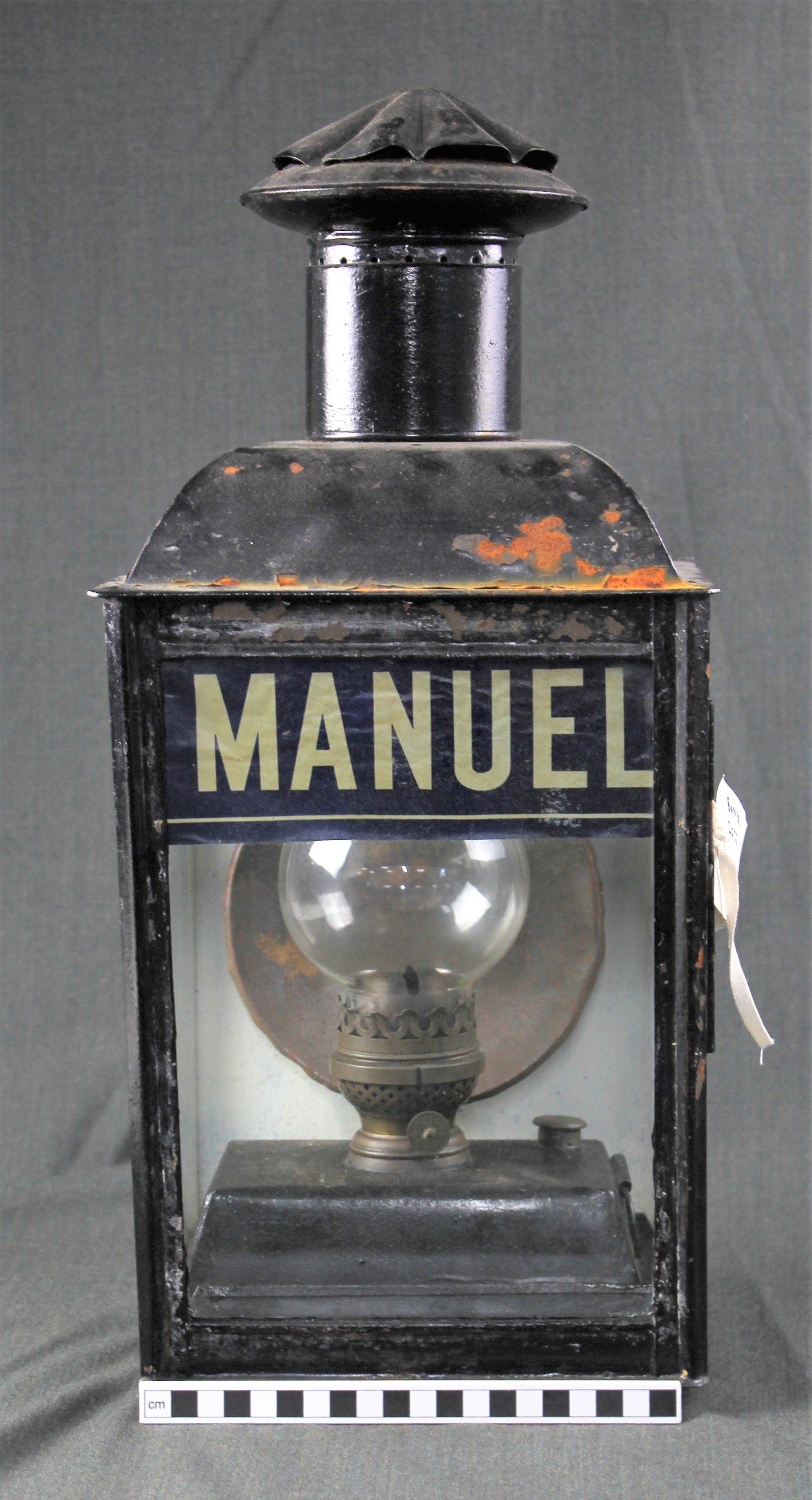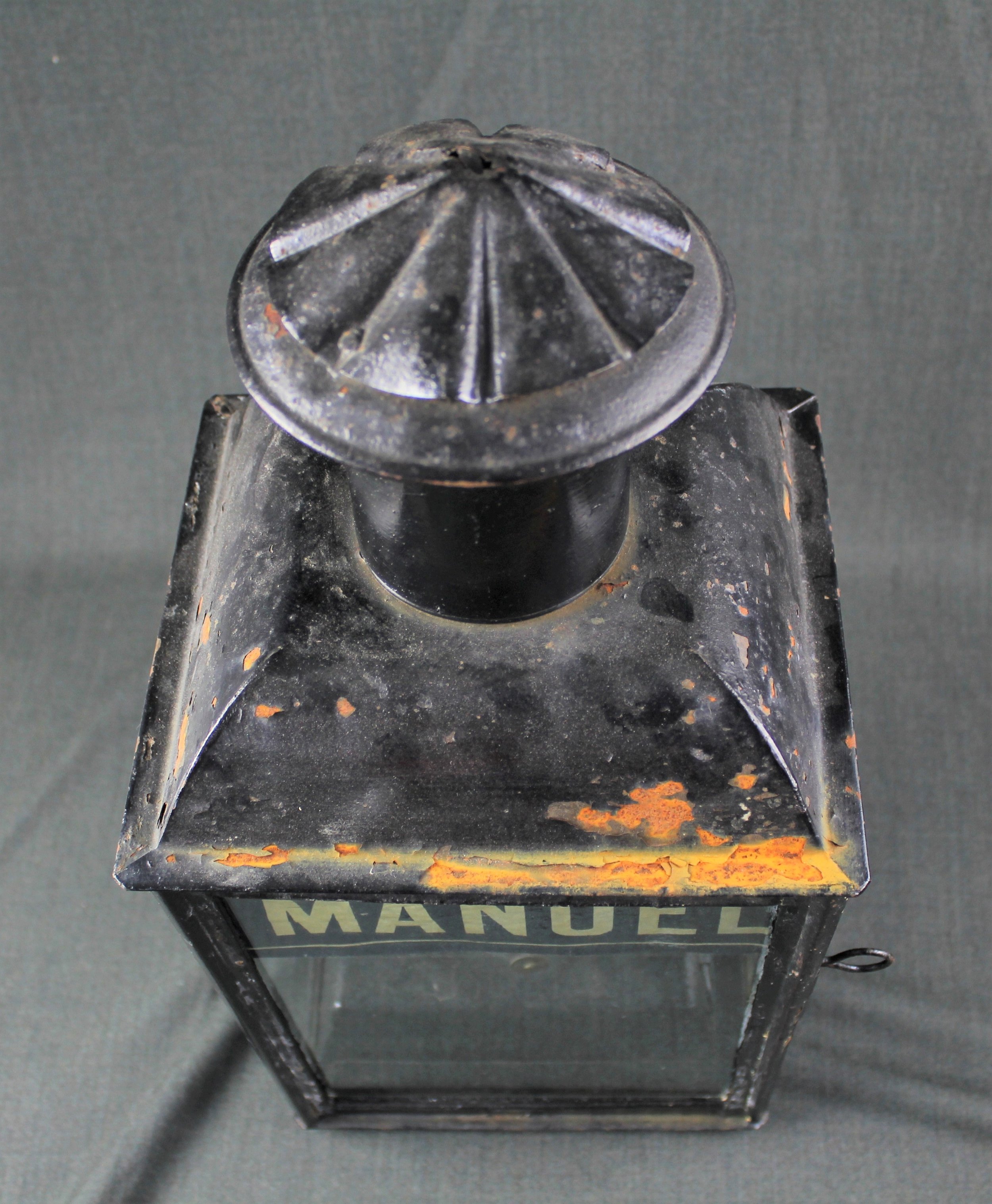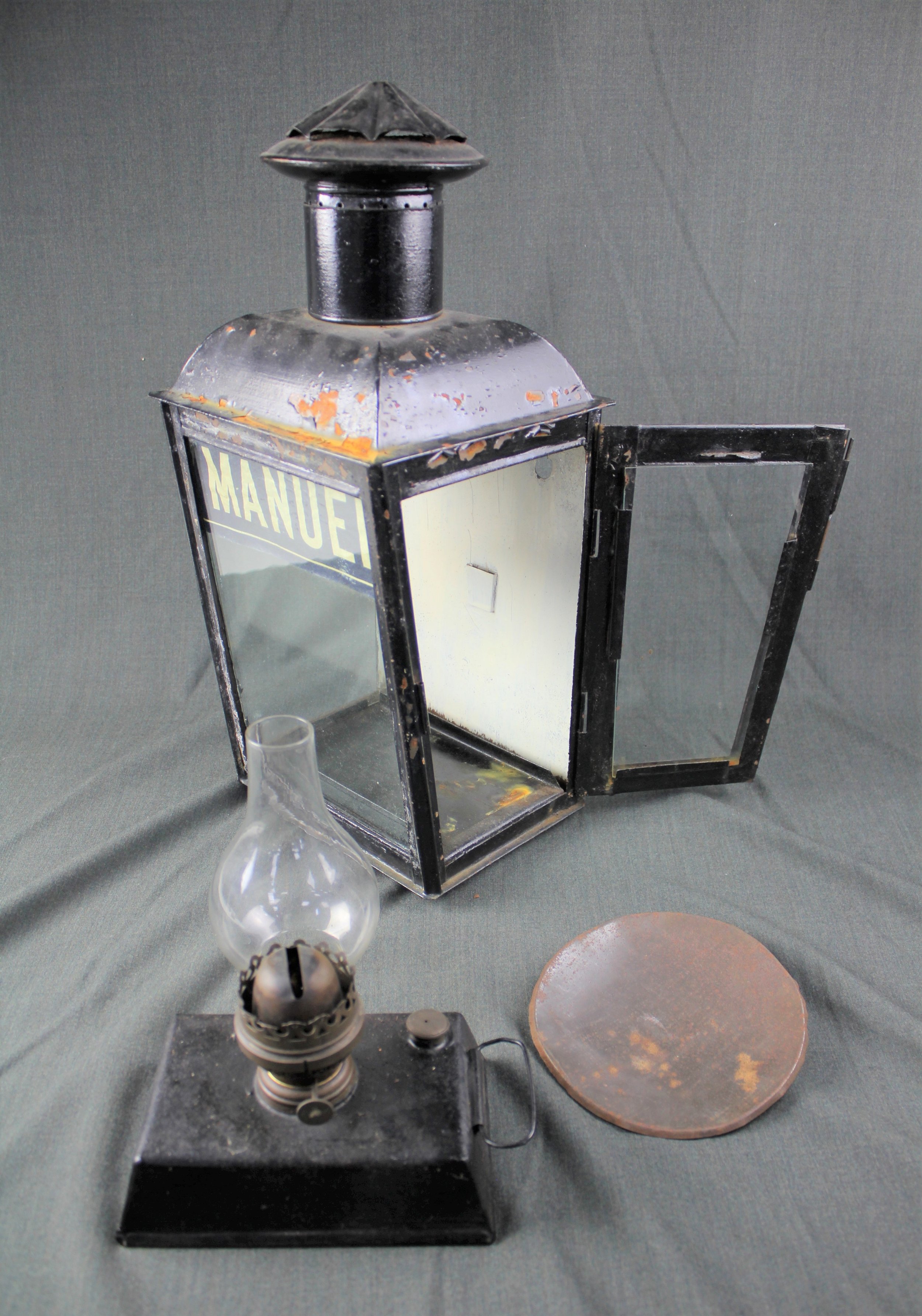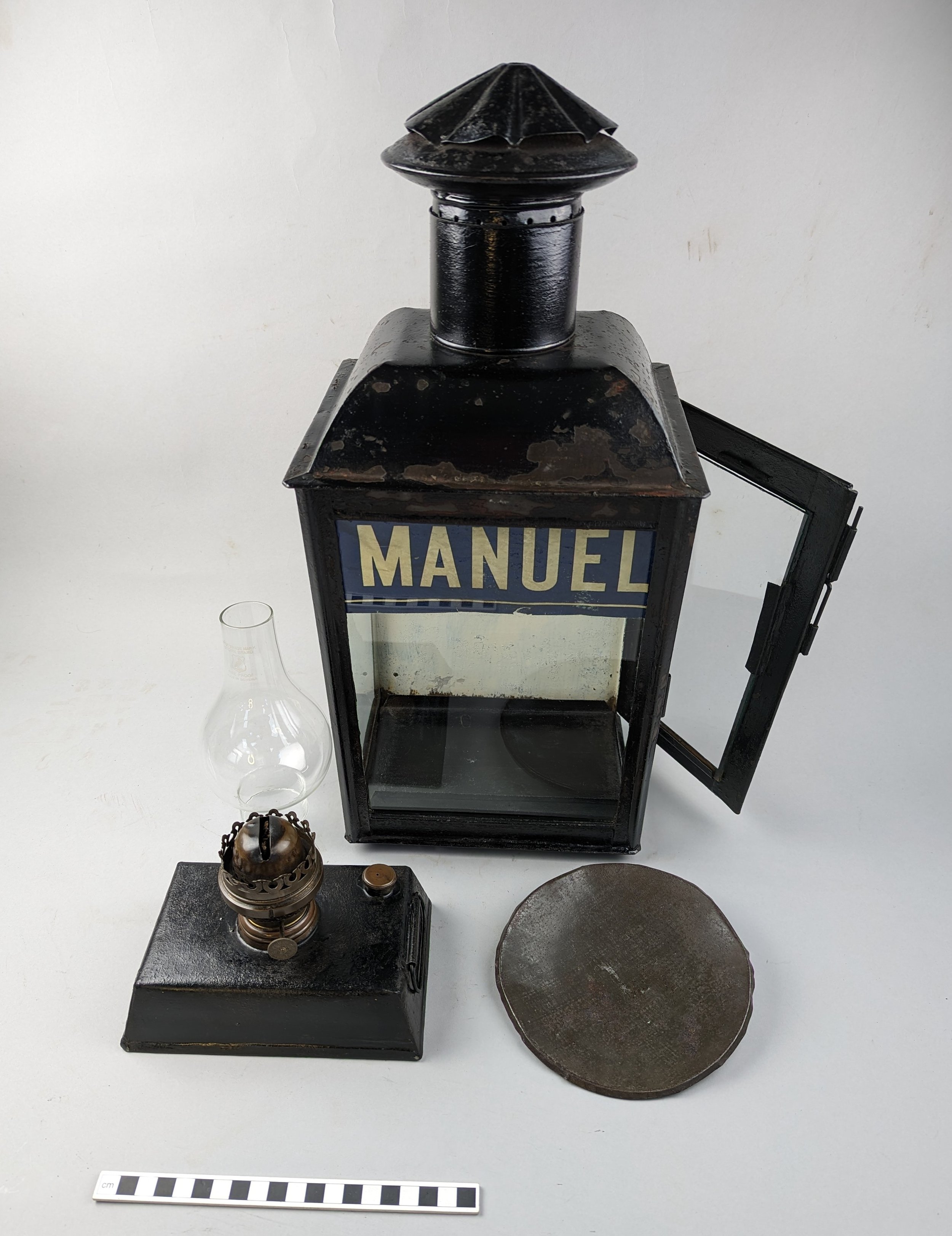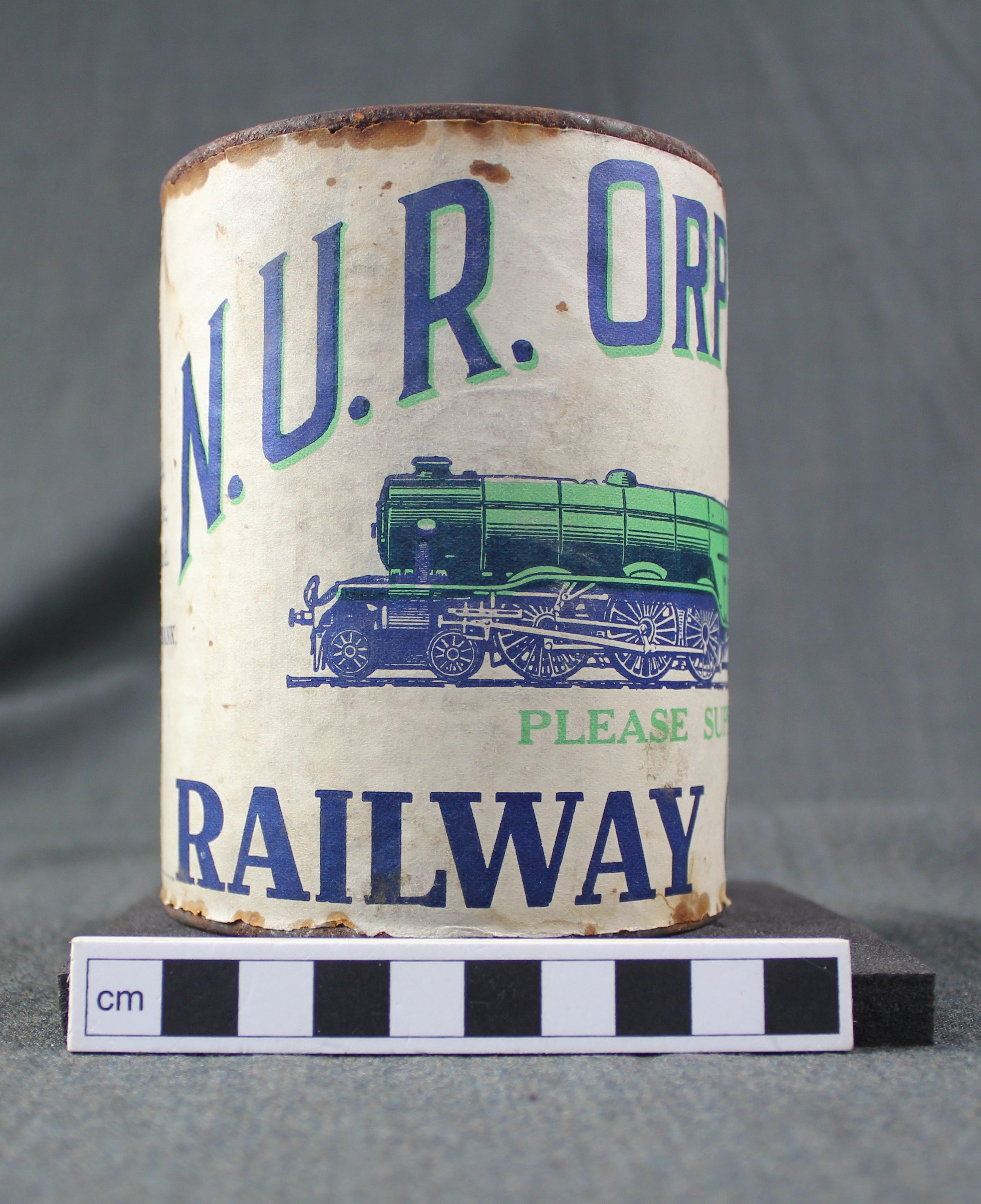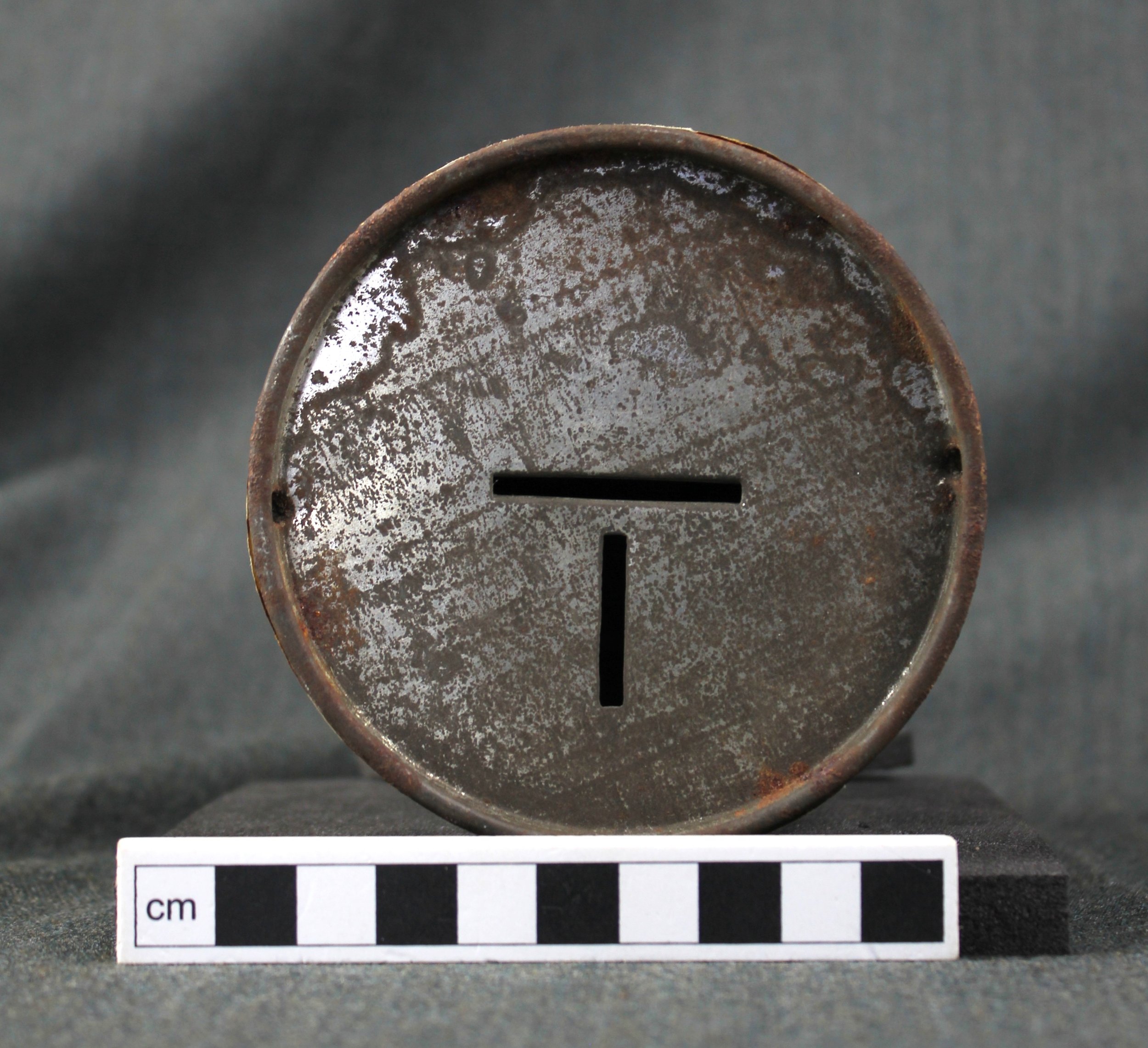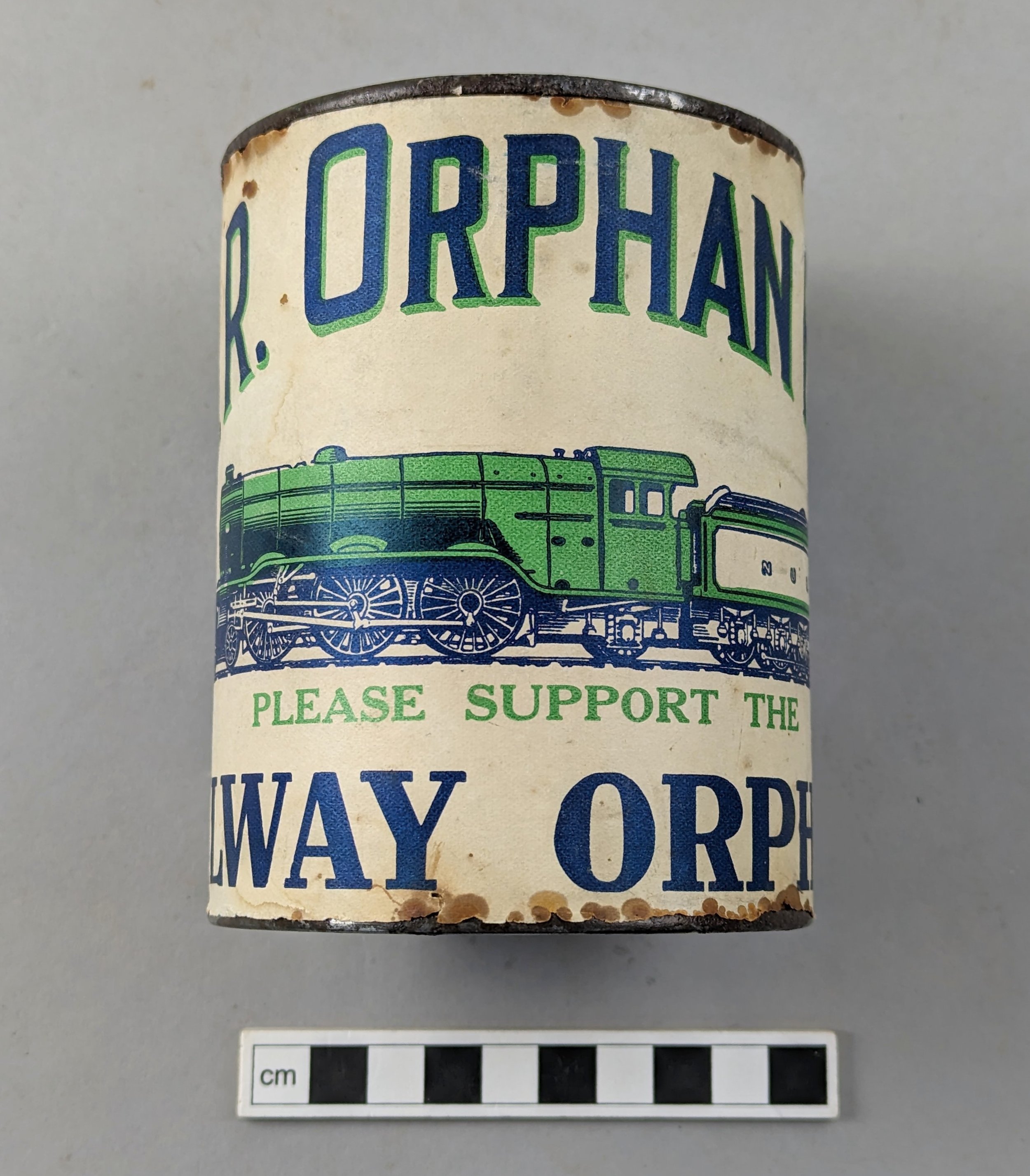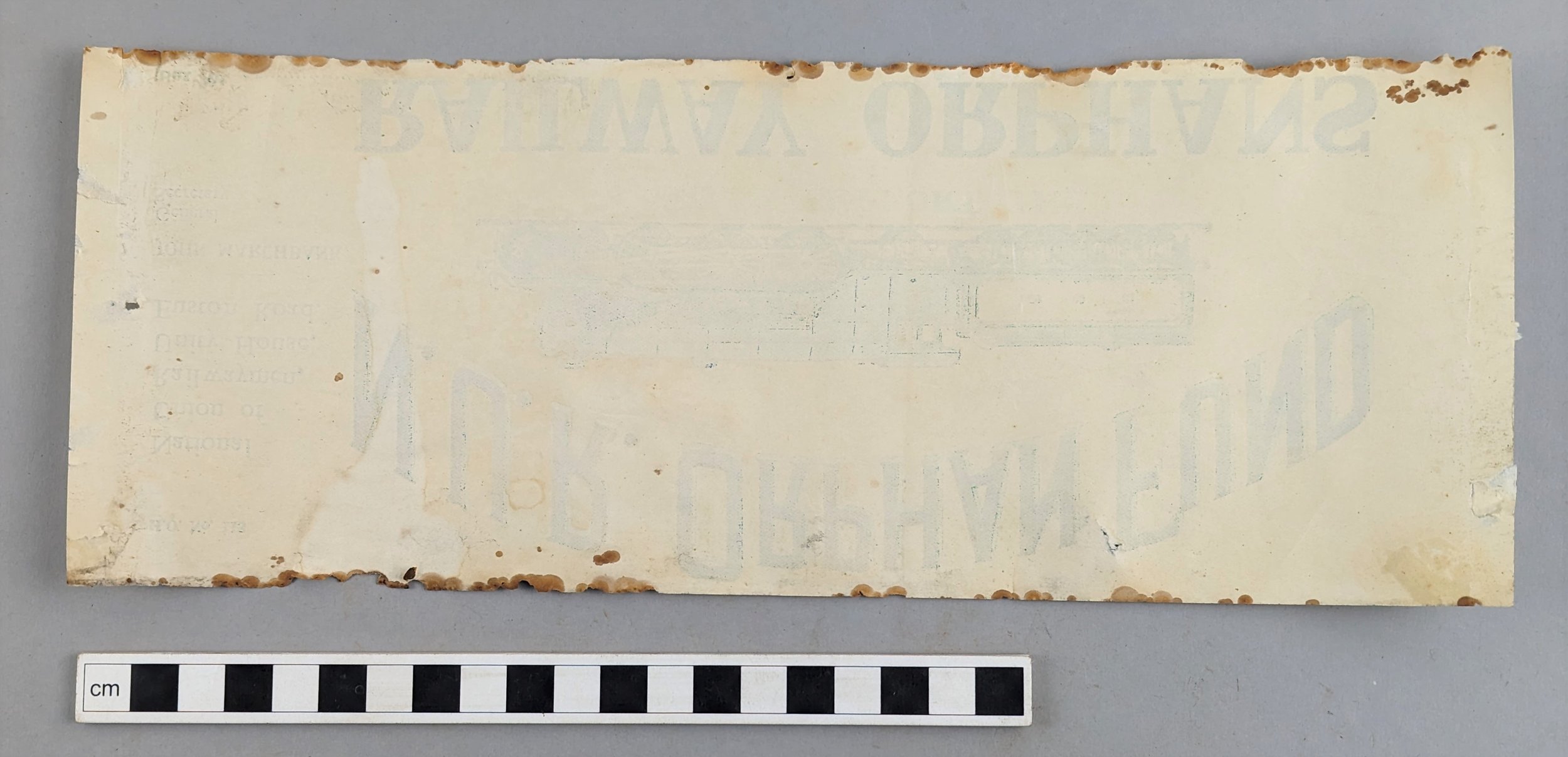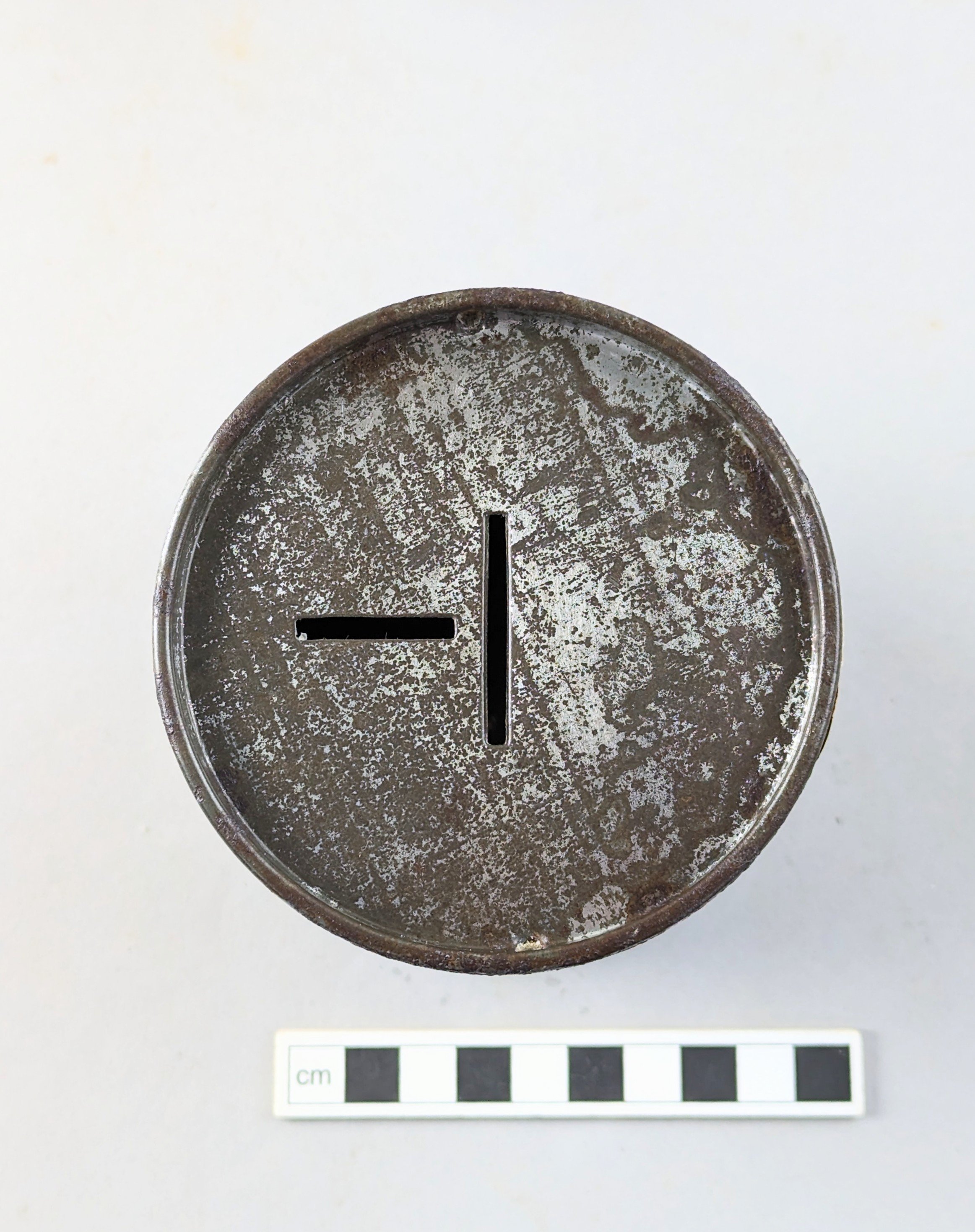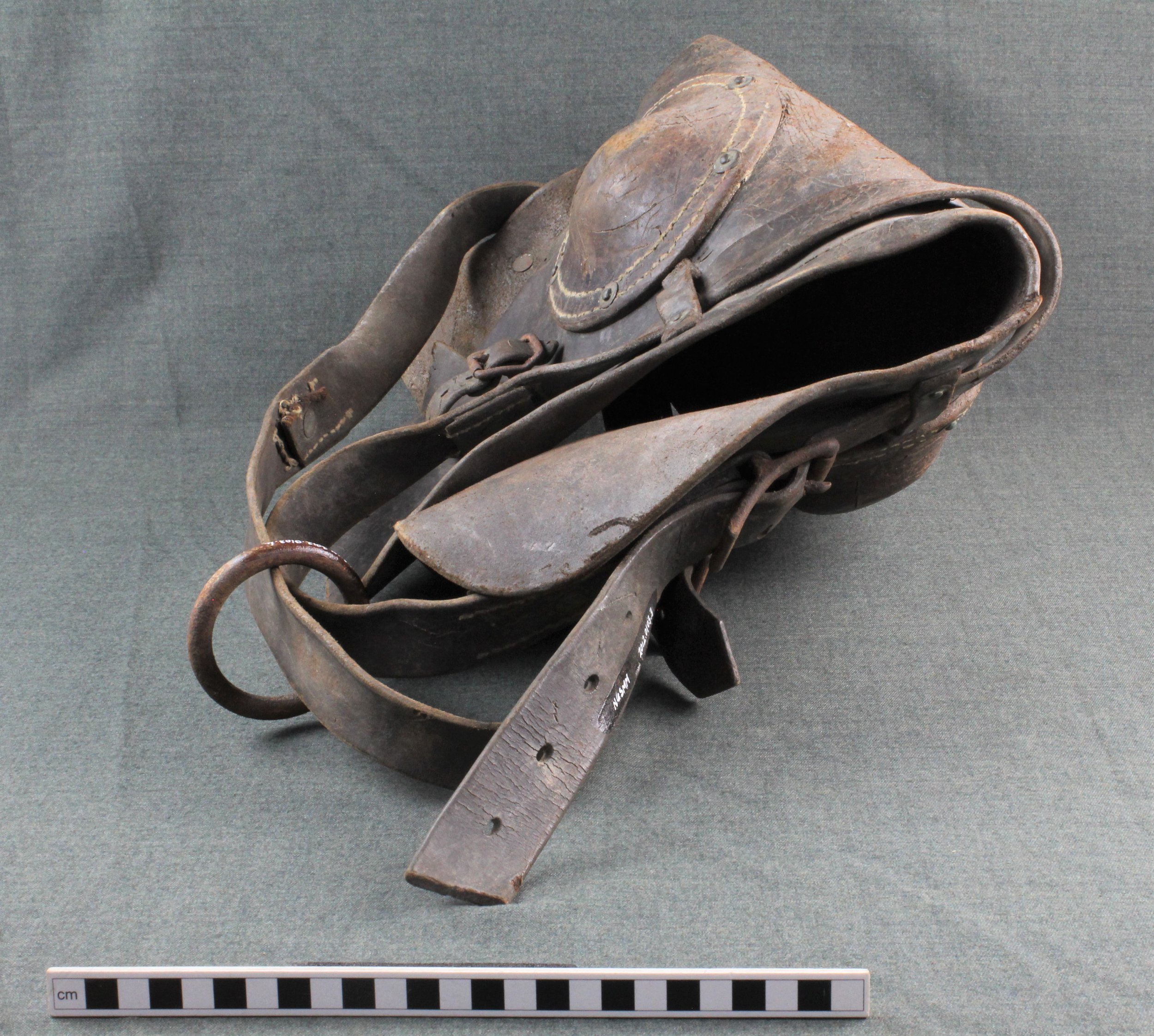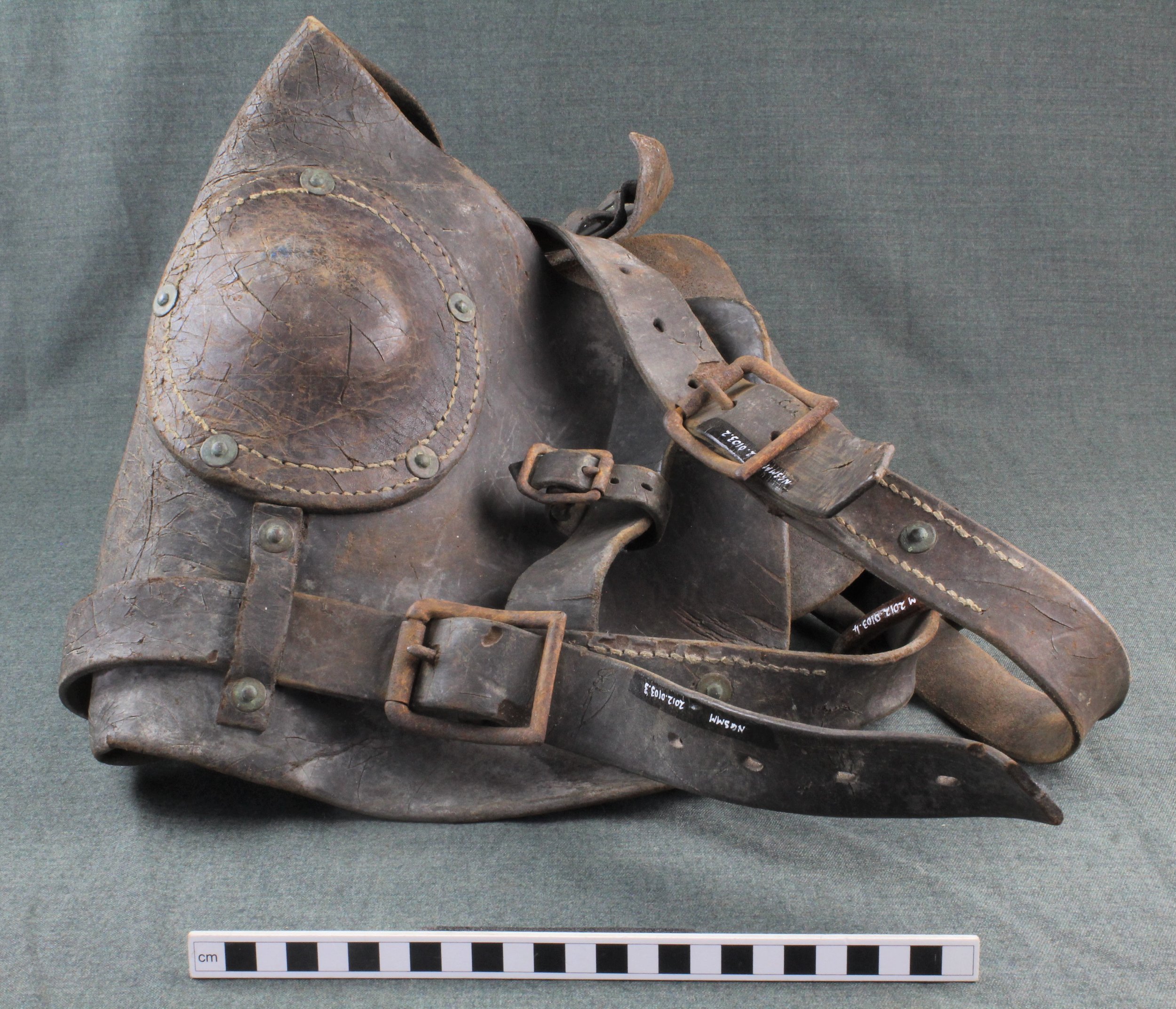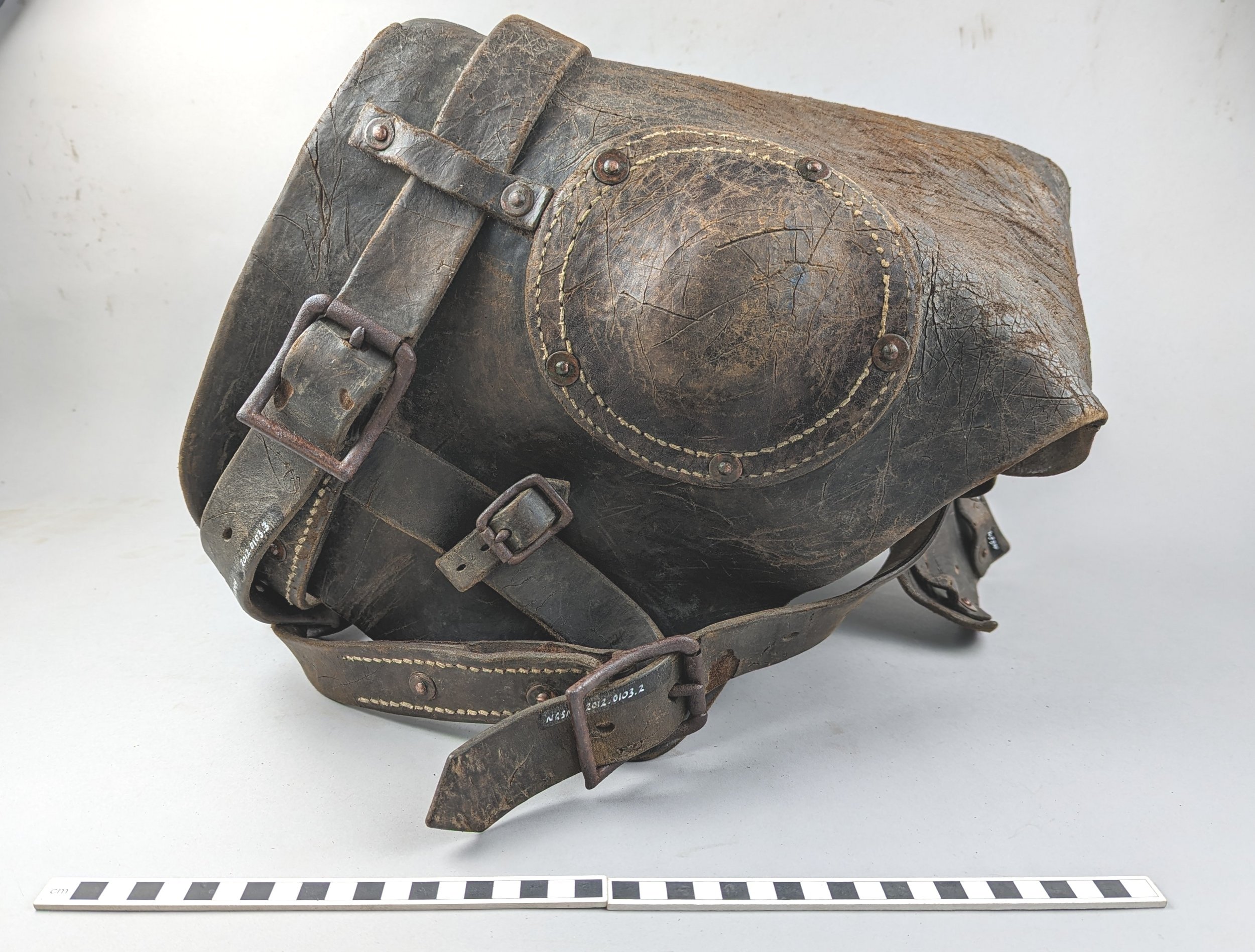Behind the Scenes: Highlighting the conservation work done by fellow conservators at AOC!
With more than 14 member museums, each with their own conservation needs, it is impossible for me to undertake the treatment of all the objects that have been uplifted back to the lab at AOC Archaeology. I thought I would take this opportunity to highlight some of the excellent work being done by fellow conservators on the Powering out People project!
Objects uplifted from the Museum of Scottish Railways, Bo’ness
Back in May several objects were uplifted from the Museum of Scottish Railways in Bo’ness, including this ‘Manuel’ wall mounted railway lantern, and charity collections tin.
The lantern was heavily soiled, and parts of the metal surface were actively corroding, as you can see in the pictures below. Conservator Victoria Herbert reduced the corrosion using glass bristle brushes and hand tools, before coating the metal with microcrystalline wax to protect against future corrosion. The wax was lightly tinted with pigment to ensure it blended in with the black painted surface (see post conservation images below). The interior glass chimney and exterior glass panes were then cleaned with 1% Synperonic A7 detergent in deionized water, and degreased with industrial methylated spirits.
Above: Railway Lantern, Before Conservation
Above: Railway Lantern, Post Conservation
The metal components on this charity collection tin were also heavily corroding, and as a result the paper label was significantly stained along the upper and lower edges. The label was carefully removed so that corrosion could be reduced and the metal coated with microcrystalline wax; the label was then cleaned using smoke sponge, and carefully re-adhered to the collection tin using 3% Klucel G in ethanol. What a difference a gentle clean can make!
Above: Collection’s Tin, Before Conservation
Above: Collection’s Tin, Post Conservation
National Mining Museum Scotland
This leather pit pony harness came to us in a sorry state; the leather was heavily soiled and extremely embrittled, causing the harness to become misshapen, and the metal components were visibly corroding. Conservator Victoria Herbert set about cleaning the harness, first using a soft bristle brush and vacuum, followed by groomstick and smoke sponge to remove some of the more ingrained soiling. She then created a humidity chamber for the harness, which was monitored for a week. The harness was checked each day and gently reshaped with plastazote blocks to help hold it in position as it acclimatized to its new shape. Finally she reduced the corrosion on the metal components, and gave them all a coat of microcrystalline wax to protect against future corrosion issues.
The harness has now been returned to the National Mining Museum Scotland, Newtongrange, where curator Nicola Moss plans to hold an exhibition in the next year highlighting the conservation work done!
Above: Leather Pit Pony Harness, Before Conservation
Above: Leather Pit Pony Harness, Post Conservation
If you would like to find out more about the Museum of Scottish Railways, or the National Mining Museum Scotland, follow the links below!

